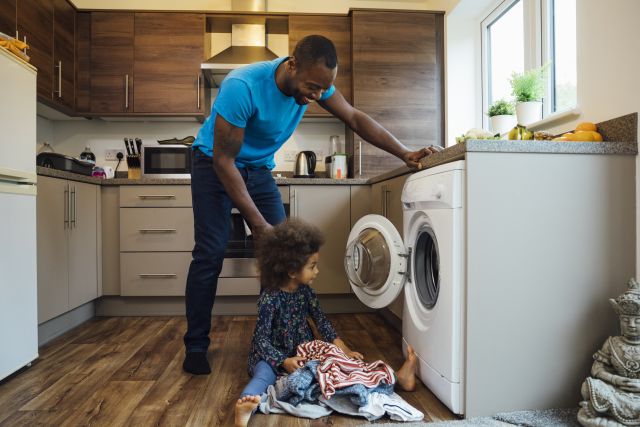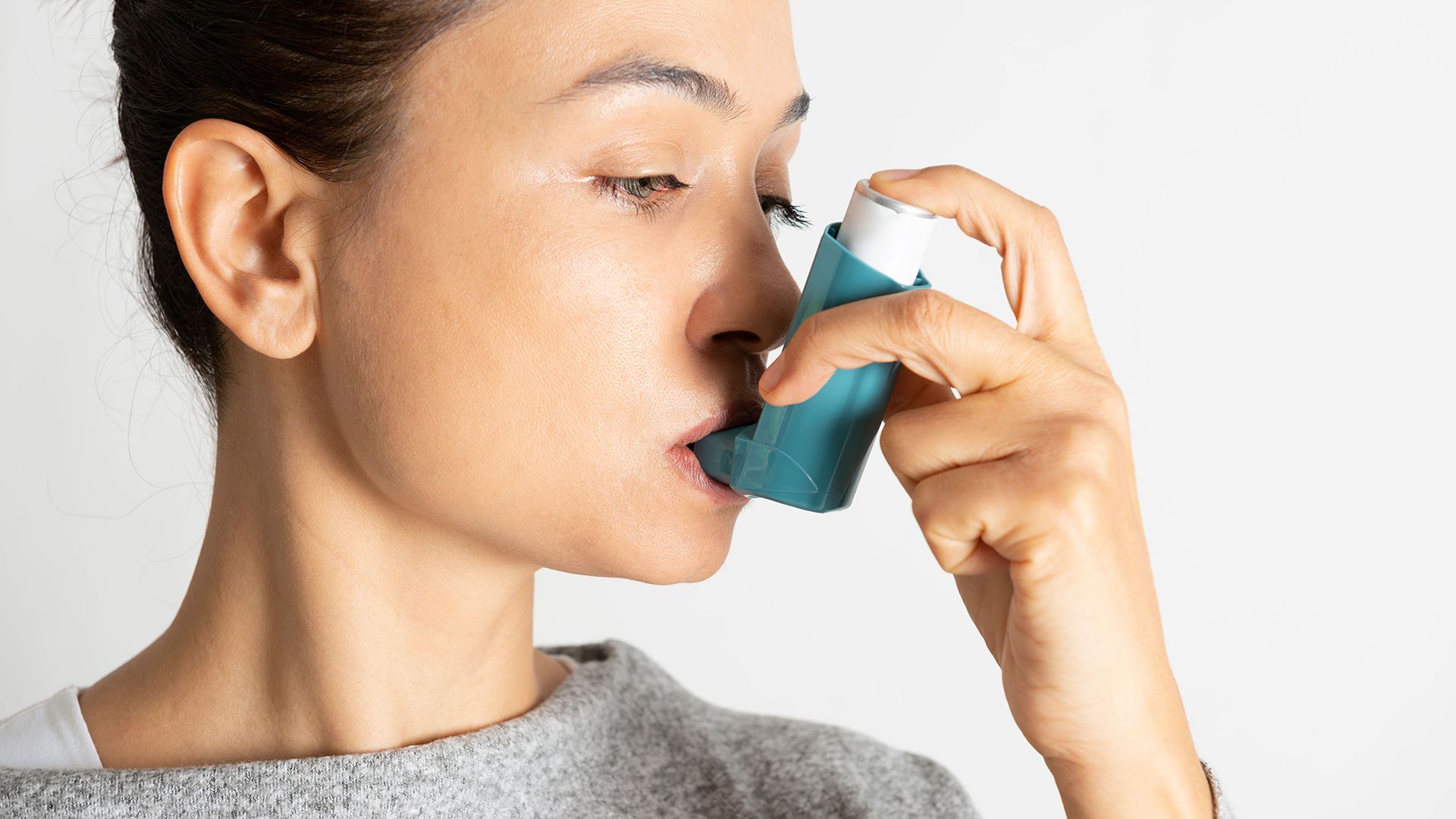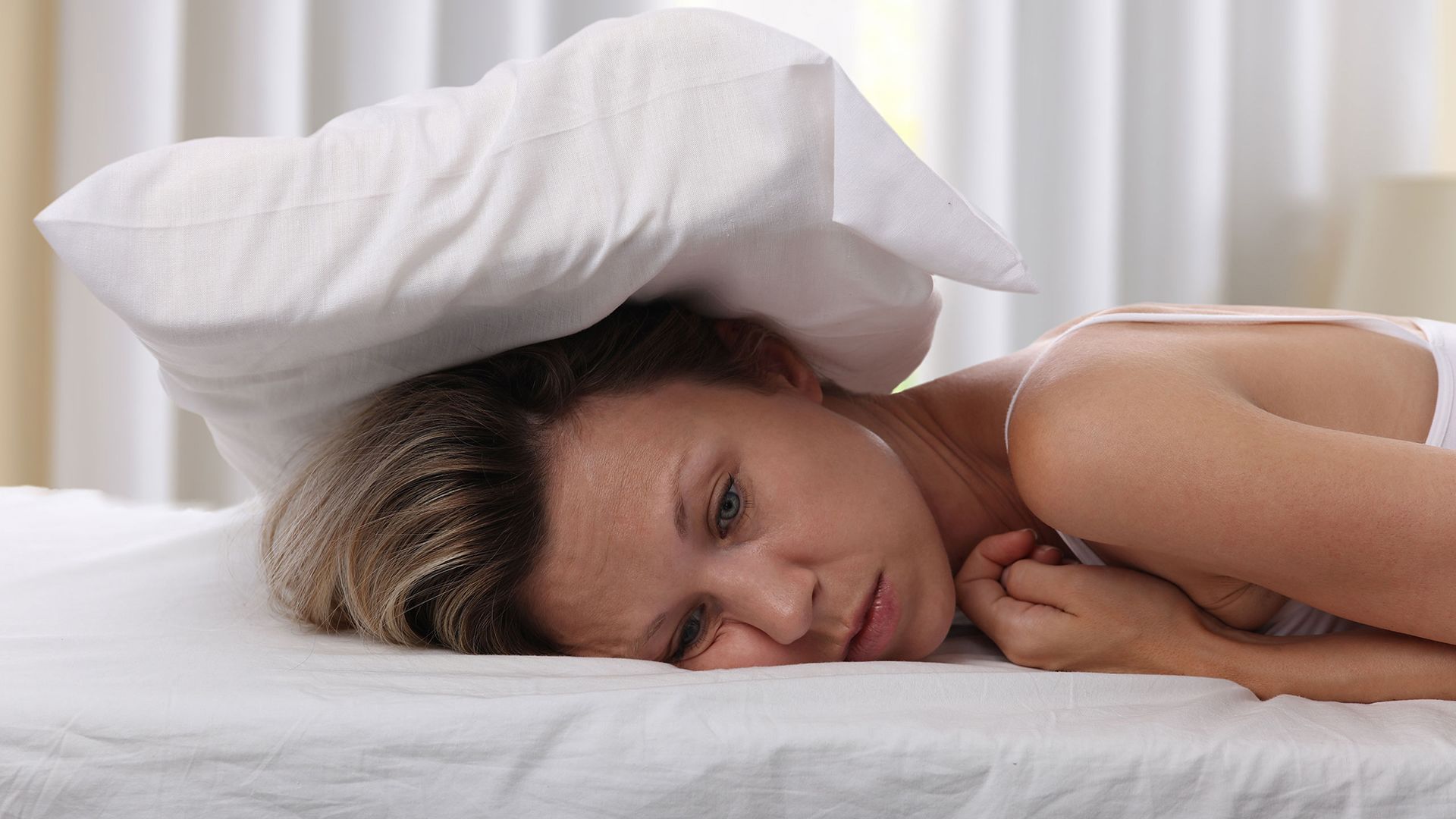Updated on March 6, 2024
Today, the average family in the United States spends about 90 percent of their time indoors, usually at home. If you or a loved one has a lung condition like asthma, your home’s air quality can have a big impact on your health and happiness.
No matter how tidy your space appears to be, it can contain easy-to-overlook asthma triggers. Top sources include dust, dust mites (microscopic creatures that live in fabric like bedding), mold, and fragrances. Here are steps you can take to help eliminate these risks from your home.
De-clutter and mop away dust
Clutter collects dust, a common asthma trigger.
“Dust is made up of many different harmful particles,” explains Dana Boyd Barr, PhD, a professor of environmental health at Emory University Rollins School of Public Health in Atlanta, Georgia. “It can contain dead skin cells, household chemicals, cockroach droppings, and other pollutants that no one should breathe.”
To de-clutter spaces:
- Remove all items from the space to be cleaned
- Set aside belongings you no longer need for donation or disposal
- If the space still appears cluttered, consider moving excess items to storage or elsewhere to reduce clutter
- Use a wet rag to remove dust from the items that remain, as well as surrounding surfaces
- Repeat this process often
Pro tip: You can add a little flair to closets by organizing them with clear bins of various colors and designs. It’s easy to dust the outside of bins that have sealable lids, and these can be purchased for $5 and up at discount or home stores.
Wipe down blinds, fans, and air vents
Use a wet rag—not a duster or dry rag—to “wet-dust” items and surfaces in your home weekly. And don’t forget to look up! Asthma triggers like dust, dander, and cockroach droppings tend to settle on ceiling fans and around air ducts.
What other high-up places tend to attract dust? Blinds, light fixtures, and house plants.
“The key is to not let these hiding spots build dust,” says Barr. “It’s safer for your health and easier to clean if you’re washing them often.”
Pro tip: Remember the inside of your Heating, Ventilation, and Air Conditioning (HVAC) system. Read its manual to see how (and how often) to change the filter. Many companies recommend switching filters every three months.
Consider a portable air purifier
HVAC systems help keep us cool in the summer, warm in the winter, and comfortable in between. But even the best ones can’t remove 100 percent of air pollutants.
Give your HVAC a boost by opening windows and doors regularly to let fresh air in and dirty air out, except when outdoor pollen or pollution counts are high. (You can check the local pollen count at Weather.com and air quality at AirNow.gov.) Use exhaust fans when cooking, cleaning, or bathing, whenever possible.
Also consider placing portable air purifiers in areas where you spend the most time. Portable purifiers should ideally:
- Contain a HEPA filter: HEPA (high-efficiency particulate air) filters can theoretically remove at least 99.97 percent of tiny particles like dust, pollen, mold, and bacteria from the air, according to the U.S. Environmental Protection Agency (EPA).
- Cover a suitable area: That means the device should be sized appropriately for the room you wish to clean and should filter for both particles and gasses.
- Remove tobacco: Tobacco smoke is often the smallest particle size that filters can capture. That means if your purifier can catch tobacco, it will capture most other particles, too.
“HEPA filters capture what are called ‘very fine particles,’” explains Barr. “These are particles that are so small they can make it past your nose, down into your airways, and even into the tiny vessels of your lungs.” If toxic particles regularly pass from your lungs into your bloodstream, they can put you at risk for other illnesses, like cancers, as well.
“The important thing to remember is that you have to clean or replace the filters often,” she says. “HEPA filters only work as well as the amount of filter surface that’s clean and available for particles to pass through.”
If you don’t have a portable device or can’t purchase one, you can make an air purifier at home. It will cost roughly $30 to $40 to purchase items like a box fan and high-quality filters to make a homemade device. But the supplies tend to be more affordable than buying a retail portable air purifier. Follow these tips for building your own air purifier from the Centers for Disease Control and Prevention (CDC).
Pro tip: Look for air purifiers that also control humidity. Low humidity can increase your chances of lung infections, while high humidity can encourage mold and dust mites to grow. An indoor humidity level of 30 to 50 percent is just right.
Vacuum like a pro
Just like with your air purifier, you should aim to use a vacuum cleaner with a HEPA filter. Use this type of vacuum on all carpets and fabric furniture weekly. The price of HEPA vacuums varies, with some major retailers offering options starting at $37. Be sure to read product instructions on how and when to replace your vacuum’s filter.
Pro tip: Look for HEPA vacuums that use disposable bags. Cleanup for these may be as simple as removing and replacing the bag when you’re done vacuuming.
Deep-clean carpets yearly
The American Lung Association recommends deep cleaning carpets at least once a year, though you may want to do it more often if you have children or pets.
What is deep cleaning? It’s a process that involves using a special machine to vacuum and thoroughly wash and dry carpets. These machines are available for rent at most home improvement stores starting at around $35 a day.
Pro tip: Even better than having carpets and rugs that require deep cleaning? Avoid them when you can. Hard floors (such as wood or linoleum) are generally easier to clean and tend to stay cleaner.
Clean from the top down
Be strategic with your cleaning routine. That means starting high and ending low:
- Clean fans and vents first.
- Wash fabrics and furniture.
- Then vacuum the floor.
Pro tip: When you clean in this way, you can help prevent dust that settles above from falling onto furniture and carpets you’ve already cleaned.
Wash and dry stuffies, too
Stuffed animals, pillows, and bedding also need regular cleaning. These items should be washed in hot water (at least 130 degrees Fahrenheit) and dried on the high heat cycle weekly to remove dust mites. Bedding such as pillows, mattresses, and box springs should ideally include a zippered, anti-allergy cover that you wash and dry weekly as well.
“If your child has a lot of mouth contact with their toys, they may be ingesting dust and chemical particles,” says Barr. “That makes it especially important to wash both hard and soft toys.”
Pro tip: Whether you’re tossing Mr. Bunny in the wash (assuming he’s machine-washable) or deep-cleaning carpets, choose a cleaning solution from the EPA’s Safer Choice List of household products.
Skip fragrances
They might seem harmless—and even comforting—but many scented products are not safe for people with asthma. Scented candles, air fresheners, lotions, and detergents often contain chemicals that can trigger asthma symptoms and harm overall health.
“Black people in particular are often exposed to chemicals from beauty and personal care products that are marketed directly to them,” adds Barr. “Many products that are labelled for Black people—and claim to celebrate Black people—have been found to contain toxic substances.”
It’s not enough to simply scan the ingredients lists on products for chemicals. Manufacturers often conceal potentially harmful chemicals under generic or harmless-sounding terms like “fragrance.” Always choose products labeled "fragrance-free" on the EPA’s Safer Choice List or make your own (see below).
Pro tip: “When it comes to household cleaners, many are quick and easy to make,” says Barr. “Vinegar with water makes a great mirror-cleaning solution, for example. To kill food germs, wipe kitchen surfaces with a mix of 10 percent bleach in water—that’s one part bleach to 10 parts water.” Just remember never to mix vinegar with bleach, as the combination can release poisonous chlorine gas.
Keep pests away
Cockroaches are unwelcome guests in many U.S. homes. They leave behind droppings and body parts that aren’t just gross but are also asthma triggers. In fact, upwards of 63 percent of homes in the U.S. contain cockroach allergens—including as many as 78 to 98 percent of homes in urban areas. Unfortunately, many pest control solutions like sprays and “bug bombs” can worsen asthma symptoms.
The EPA offers a must-read list of the do’s and don’ts of pest control. Their tips include opting for bait traps that lure cockroaches and contain them, as opposed to spreading poisonous chemicals around the home.
“There’s never a need for broad spraying,” says Barr. “You or your exterminator should only ever use a ‘crack and crevice’ approach.” This involves treating and sealing up little openings and holes (such as in baseboards) where bugs can enter or hide. “You shouldn’t see pools of pesticides in the home,” she continues, “and there shouldn’t be a noticeable odor more than six hours after the exterminator leaves.”
Pro-tip: If you work with an exterminator, choose one who’s certified according to EPA standards.
Banish mold
Mold tends to grow in moist areas with poor ventilation and improper sealing. If you have a shower with broken tiles, for instance, you might find yourself cleaning mold often.
To avoid mold, use an exhaust fan in moist areas and check for leaky pipes regularly. If you notice a leak or water damage, fix it fast. If you have a landlord who won’t cover the repairs, legal aid services may be able to help.
To remove mold from areas larger than 10 square feet, the EPA recommends working with a certified contractor. If the area is smaller than that, and you’re determined to remove it yourself, use an EPA-approved cleaning solution.
Pro tip: Many professional cleaners recommend spraying white distilled vinegar onto the moldy area, letting it sit for an hour, and scrubbing it away. Others recommend a homemade paste of baking soda and water. These home remedies can help, but the mold will eventually return if the underlying problem (like a leak) isn’t fixed. Always wear a mask and ventilate the area when cleaning mold.
Get help when you need it
Ideally, if you’re the person with asthma, the chores described here won’t be on your to-do list. People with asthma should avoid any tasks where triggers might be released into the air. When possible, swap these chores with someone else.
“Not everyone has a chore buddy they can rely on,” notes Barr. “But there are people and businesses in many communities that enjoy doing this type of work as a form of service.”
“Cleaning companies, for instance, sometimes offer a certain number of free cleanings to people with health needs who can’t afford services,” she adds. If you live alone and have asthma, consider reaching out to local organizations, faith-based groups, and/or cleaning services to see if they can help with asthma cleanings.
Your local department of health can help with environmental threats in the home (like mold or lead). If you’re concerned about long-term exposure to substances, and you want to get tested, make an appointment with a healthcare provider. If you or your child is exposed to a poisonous substance (like a cleaning chemical), contact Poison Control at 800-222-1222 right away.
If you have major asthma risks in your home—such as mold, lead paint, or asbestos—the organizations below can offer guidance and support in removing them. They might not always be able to solve the problem, but they can answer questions, help you to understand your rights, and connect you with additional resources.
For homeowners
If you’ve learned your home contains toxic building materials, you may be able to apply for financial help in removing/replacing them through the U.S. Department of Housing and Urban Development.
For renters with unresponsive or abusive landlords
Contact your state’s legal aid society and public health department if your landlord refuses to help with issues like roach infestations, mold, lead paint, or other environmental hazards.
Reach out to your local housing authority as well. They may be able to inspect your space and fine your landlord for code violations. If your state’s laws don’t protect renters against hazards like mold (and most do not), emphasize the underlying cause—like a leaky ceiling—and how it’s in violation of your lease.
This article has been written in collaboration with the Center for Children’s Health Assessment, Research Translation, and Combating Environmental Racism (CHARTER) at Emory University. CHARTER works to develop strategies to translate research findings on children’s environmental health for stakeholders in the community, academia, and health care with the goal of improving children’s health.
Read more from this series on asthma in children and ways to protect children from asthma at school.





